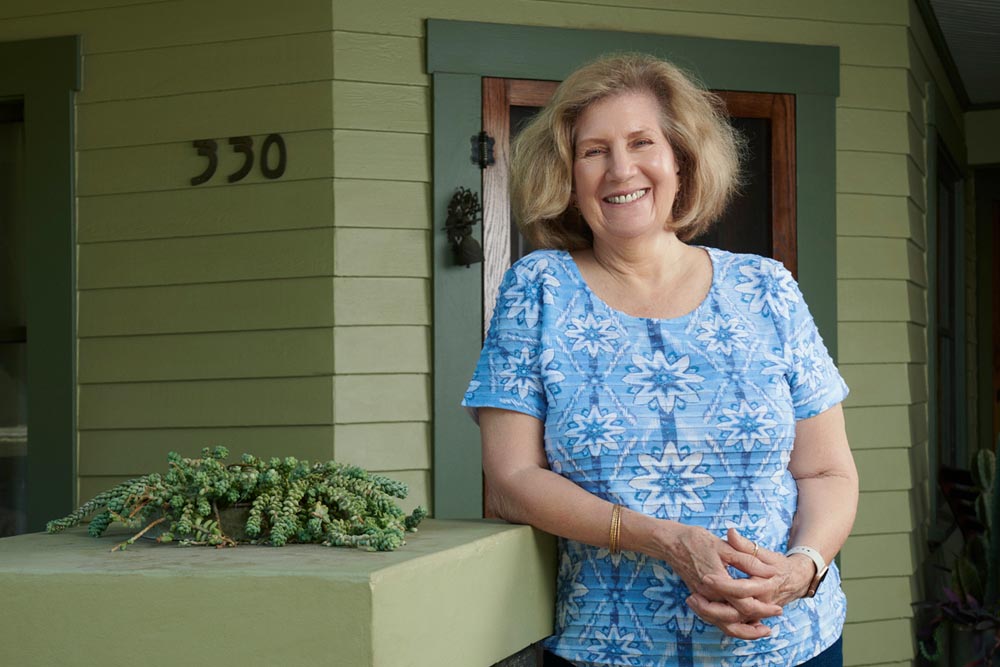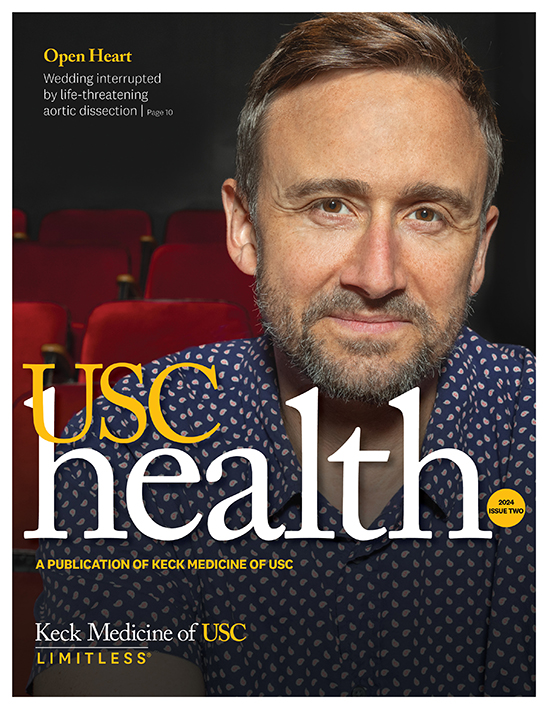
Victoria Farraj first noticed her atrial fibrillation symptoms while teaching Kindergarten. The totally thoracoscopic maze procedure, performed by the USC Cardiac and Vascular Institute, helped get Victoria’s heart back into rhythm.
Victoria Farraj was with her kindergarten class, dealing with an “exceptionally active” student, the first time it happened. Her heart suddenly started racing.
By the time Victoria, then 61 years old, got home that day in January 2013, the problem went away. But about one year later, Victoria’s heart began to beat so fast she felt as if it could leap out of her chest.
An electrocardiogram at her doctor’s office told the story: It was atrial fibrillation (AFib), the most common type of heart arrhythmia, where the heart beats in an irregular manner.
Most likely to strike after age 60, AFib can occur at any age. Left untreated, it can lead to heart failure symptoms, stroke and other complications.
Persistent AFib following multiple attempts at intervention
Under a cardiologist’s care, Victoria began taking medications to control her rapid heartbeat.
But her heart would still periodically start racing at 132 to 138 beats per minute, often waking her in the night. A normal resting heart rate is 60 to 100 beats per minute.
“It’s so disconcerting to have AFib because it just happens,” says Victoria, noting that the physically draining episodes kept her from exercising and traveling. “There’s no warning.”
Other interventions followed. Over a nearly two-year period, Victoria had a cardioversion procedure — quick, low-energy shocks to the heart to restore a regular rhythm — three times.
She also had two cardiac ablations that involved the threading of a thin, flexible tube called a catheter through her veins into her heart to create scar tissue to break up the irregular rhythm.
Victoria’s doctors determined she had a type of AFib called long-standing persistent atrial fibrillation.
“It’s difficult to treat, and a very different disease than paroxysmal (occasional) AFib,” says Jonathan Praeger, MD, a cardiothoracic surgeon at the USC Cardiac and Vascular Institute.
Victoria was referred to Dr. Praeger in the fall of 2021 to learn about an AFib treatment option she had never heard of — the totally thoracoscopic maze (TT Maze) — that might finally bring relief.

Avoiding the need for open-heart surgery to treat AFib
In a maze procedure, a surgeon uses different types of energy to create scar tissue in a pattern (maze) on the heart’s upper chambers because scar tissue can’t conduct electricity.
As a result, the “maze” blocks the faulty electrical signals behind AFib while allowing normal heartbeat signals to get through.
A standard maze involves open-heart surgery and is usually performed on patients who have other cardiac issues, such as coronary artery disease. The minimally invasive TT Maze approach is done for individuals dealing only with AFib.
“I work through incisions a centimeter wide,” Dr. Praeger says. “You get close to all the benefits of a traditional maze procedure without having to open the chest.”
It’s so disconcerting to have AFib because it just happens. There’s no warning.
Victoria Farraj, patient, USC Cardiac and Vascular Institute
Victoria underwent a TT Maze procedure in February.
After making a few small incisions, Dr. Praeger deployed an endoscope — a thin tube with a video camera at one end — to view magnified images of Victoria’s heart in real time.
Using radiofrequency, he built a scar pattern on the exterior of her heart’s left upper chamber. He then clipped and excluded the left atrial appendage, a blind pouch where the blood pools and clots typically form.
Finally, Dr. Praeger removed a piece of unneeded tissue on the outside of the heart, called the ligament of Marshall, which can be a source of AFib.
Returning the heart to normal sinus rhythm
Before Victoria left the operating room, her heart had returned to normal sinus rhythm.
“Almost always, I can watch a patient’s heart convert back to a healthy rhythm as soon as the procedure is over,” Dr. Praeger says. “It’s so gratifying to watch the hemodynamics improve.”
The heart takes about three months to settle into its new rhythm. Victoria experienced a few minor incidents of AFib soon after the procedure, but she has been in good health since.
“I feel wonderful,” says Victoria, who is now 72 and living in Glendora.
Under her cardiologist’s direction, Victoria began weaning off her heart medications. She is back to taking long walks, helping to care for her young grandson, Archer, and enjoying life with her husband, George.
The TT Maze procedure — which offers a quicker recovery and less bleeding and postoperative pain than a standard open-heart maze — is technically challenging to perform and not widely available.
“The fact that we can offer it here at Keck Medicine speaks to our expertise and our willingness to take on innovative procedures,” Dr. Praeger says. “It has changed patients’ lives, and that success is what drives me to continue.”
Topics


